Melanoma
Comprehensive Care for Melanoma: The Most Dangerous Skin Cancer
Melanoma is a serious type of skin cancer that begins in melanocytes, the cells that produce melanin, the pigment responsible for skin color. While melanocytes are primarily located in the skin, they can also be found in the eyes, bowel, and other parts of the body; however, melanoma is far more likely to develop on the skin.
Though less common than other skin cancers, melanoma is the most lethal, accounting for about 75% of skin cancer deaths. In the U.S. alone, approximately 160,000 new cases are diagnosed annually. Prolonged exposure to ultraviolet (UV) light is a significant risk factor for developing melanoma.
Regular skin checks by a dermatologist are vital for the early detection of melanoma. Dermatologists can expertly identify suspicious moles, lesions, or changes that may indicate melanoma. In addition, self-examinations help individuals spot any changes in moles' size, shape, or color or the appearance of new growths.
Combining professional skin evaluations with regular self-exams significantly improves the likelihood of detecting melanoma early, which is crucial for successful treatment and outcomes. Regular dermatologist visits and self-checks are key to maintaining optimal skin health.
At Keystone Dermatology Partners, we prioritize your skin health. Our expert team is here to support you and your family on your journey to skin wellness. Schedule an appointment today for a thorough skin check and take proactive steps to protect yourself from melanoma.
Examples of Melanoma

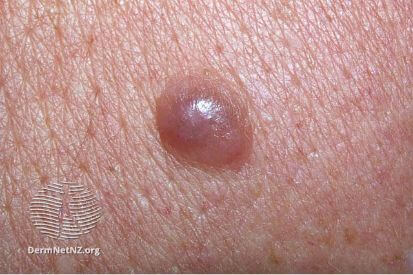
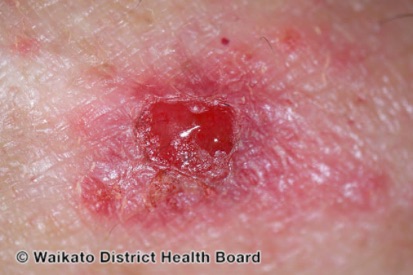
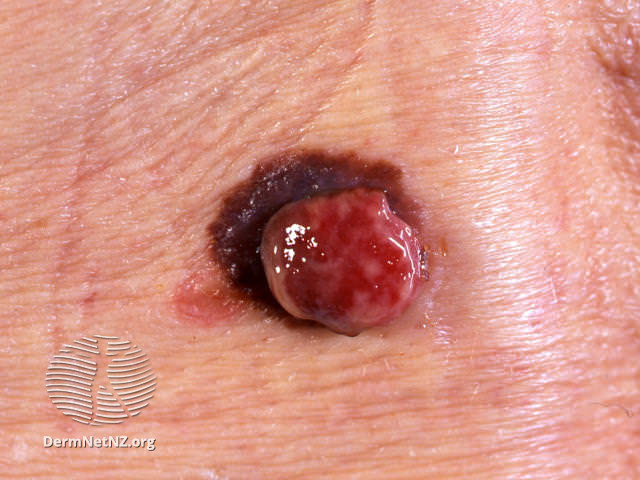
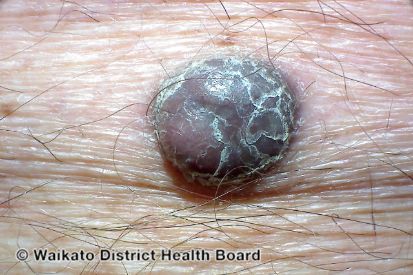
Melanoma Signs and Symptoms
- Prevalent on exposed parts like the arms and face
- Asymmetrical spots
- Borders that are uneven
- Color changes
- Diameter increases
- Evolving in size, shape, or color
Who Is at Risk for Developing Melanoma?
- People who spend a considerable amount of time under the sun
- People with incredibly fair skin
- Patients who live closer to the equator where the climate is hotter are at risk
- Patients who live in elevated areas like mountains
Diagnosing Melanoma
If skin imperfections appear to be suspect, they will be observed to see if they grow. If there are changes in appearance, diameter, and color in the follow-up checkup, a diagnosis can be made.
Frequently Asked Questions about Melanoma
The primary cause of melanoma is exposure to ultraviolet (UV) radiation, either from sunlight or tanning beds. Other risk factors include having fair skin, a history of sunburns, numerous moles, a family history of melanoma, and a weakened immune system.
Diagnosis involves a biopsy, where a sample of the suspicious area is removed and examined under a microscope. Dermatologists may use the ABCDE rule (Asymmetry, Border irregularity, Color variations, Diameter larger than 6mm, Evolution or change) to assess whether a mole may be melanoma.
Melanoma is staged from 0 to IV, with stage 0 being melanoma in situ (confined to the top layer of skin) and stage IV indicating the cancer has spread to other organs. Staging helps determine the extent of the disease and guides treatment decisions.
Treatment options for melanoma depend on the stage of the cancer and may include surgical excision, lymph node removal, immunotherapy, targeted therapy, radiation therapy, or chemotherapy. The choice of treatment is individualized based on factors such as the patient's overall health and the characteristics of the melanoma.
A skin check, or total body skin exam, performed by a dermatologist involves a thorough examination of the skin to identify any abnormalities, including moles, lesions, or other signs of skin conditions or skin cancer. This examination may be part of a routine check-up or may be prompted by specific concerns. The dermatologist assesses the size, shape, color, and texture of moles, and may perform additional tests or biopsies if necessary for further evaluation. Regular skin checks are essential for early detection and management of skin issues, and, skin cancer.
From Our QualDerm Family of Providers: Melanoma Treatment Options
Melanoma Treatment Options
Surgery can be used to remove the cancerous tumor from the skin. Dr. Perlis or Amy Levinson will take a biopsy of the suspicious lesion. If the diagnosis is melanoma, Dr. Perlis will excise the skin around the biopsy site and send it to the lab for further testing to make sure there is no more cancer present.
If the melanoma has spread, immunotherapy or targeted therapy can be used. Chemotherapy is reserved for more advanced stages. For the most severe cases, radiation therapy might be used after the tumor is removed.
Featured Blogs
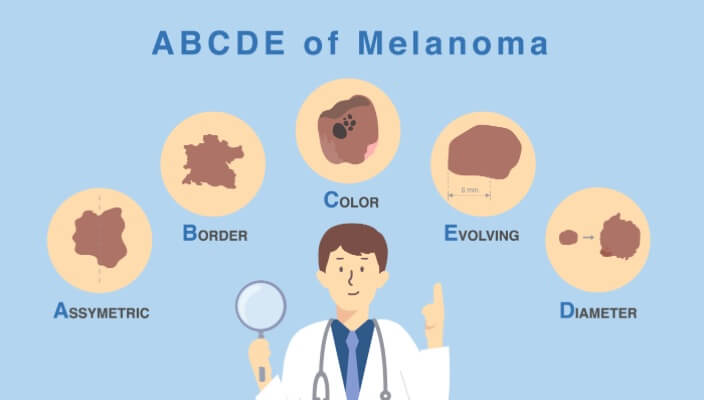
- Skin Cancer
- Skin Exams
With skin cancer cases rising year after year, it’s no surprise that people are itching to learn more about this life-threatening skin disease
Read More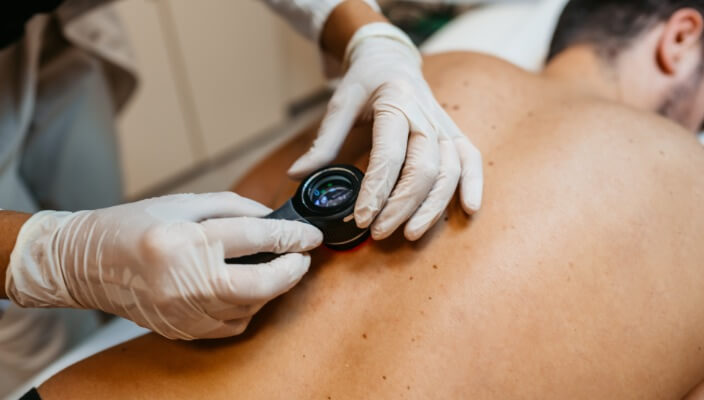
- Skin Cancer
- Skin Exams
In this blog, we’re covering what you need to know about five dangerous skin cancers, including basal cell carcinoma (BCC), squamous cell carcinoma (SCC), malignant melanoma, merkel cell carcinoma, and kaposi sarcoma.
Read More
- Skin Cancer
- General Dermatology
- Skin Exams
Navigating the landscape of Total Body Skin Exams: Uncover the comprehensive process, understand why it matters for skin health, and gain insights into what to expect during these essential dermatological examinations.
Read More

